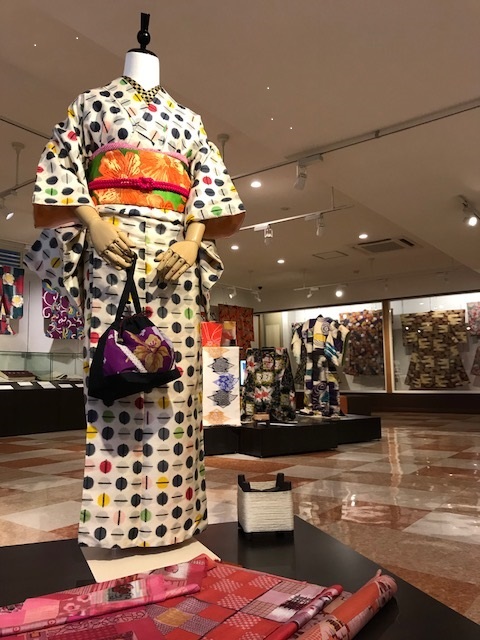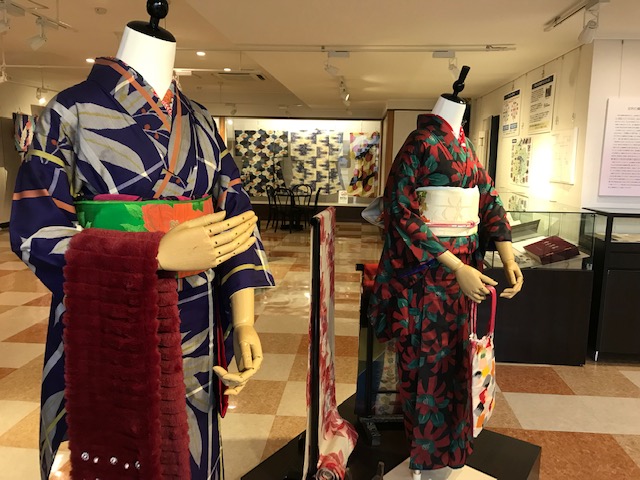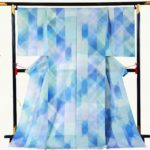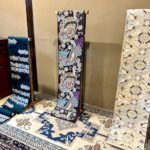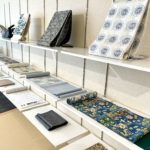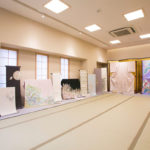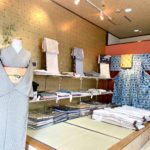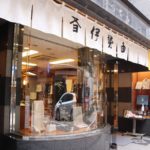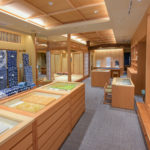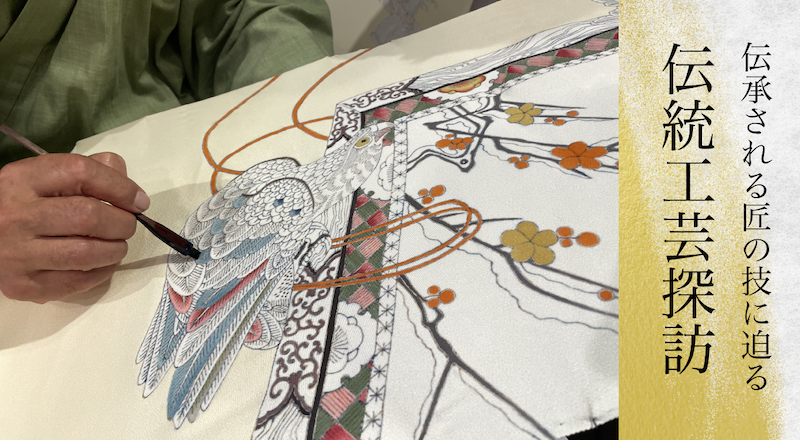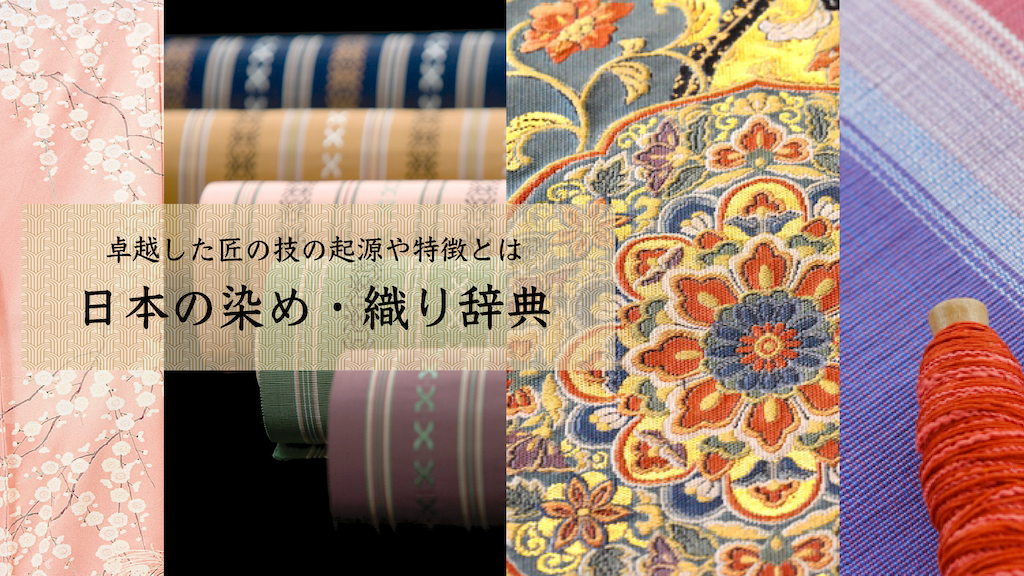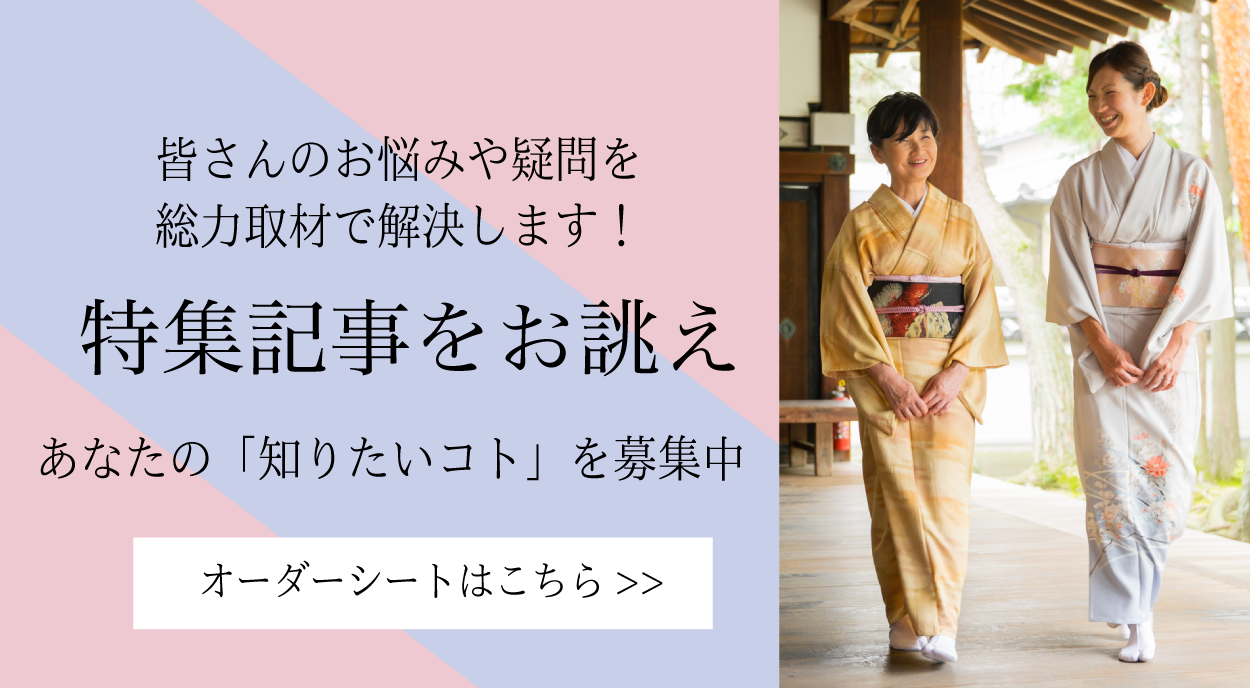足利銘仙
Pronunciation: Ashikaga-meisen
Production area: Ashikaga City, Tochigi Prefecture
Ashikaga-meisen is a plain-weave silk fabric produced in Ashikaga, Tochigi Prefecture, using the kasuri (ikat weaving) technique with pre-dyed threads. It is characterized by its vivid colors and striking designs. In the mid-Edo period, it was known as Futo-ori, a thick and durable plain weave made by using coarse threads spun from tamamayu (double cocoons) or waste cocoons, which were otherwise discarded. This fabric became popular among common people. Ashikaga-meisen achieves its unique blurred and soft patterns by deliberately misaligning the colors of the warp and weft threads during weaving, unlike ordinary plain weaves. In 1913, the technique of hogushi-ori (pattern loosening weave) was developed, expanding the variety of patterns beyond traditional stripes and arrow feathers to include curvilinear Art Nouveau and geometric Art Deco designs, as well as bold floral and abstract motifs. This innovation aligned with the rise of modern culture in the early Showa period, leading to the popularity of brightly colored “patterned Meisen” influenced by Western textile design. Today, Ashikaga -meisen is recognized as a traditional craft of Tochigi Prefecture.
